SUMMARY
This is AI generated summarization, which may have errors. For context, always refer to the full article.

MANILA, Philippines – Mrs. Tan’s piercing, wing-shaped eyes scan the crowd at BGC’s Nectar, a room full of once-familiar faces and strangers. After months of performing online in front of a webcam – often to invisible audiences – it was unnerving to return to an old haunt now packed again, but this time, in a shapeshifting and treacherous terrain.
“You don’t know what these people are expecting kasi some of these people have watched your Facebook Live,” said the drag and performance artist, recounting her first live gig in December 2021, around the time the Philippines’ health authorities posted the lowest daily COVID-19 count in months.
The Delta variant-powered wave had just ebbed; it was a period of calm, marked by optimism among nightlife businesses that have shuttered or recalibrated in the preceding months. Drag performers and the like started getting booked again for live gigs, before hyper-transmissible Omicron would later raze through the country and the world like wildfire.
Steep declines did follow these surges, and widespread vaccine coverage later allowed the nightclubs – a key source of income for drag artists – to come a little closer to business-as-usual and try to recover from the economic free fall caused by lockdowns.
“Parang in-eexpect nila na it’s the same thing, and even better because it’s two years na pahinga. – pero hindi kasi,” said Mrs. Tan. “Siyempre iba kasi pagpe-perform sa live audience sa online in terms of everything.”
(It’s like they’re expecting the same thing…because they might think it’s been two years of rest for me – but it’s not. Performing in front of a live audience is totally different from online shows.)

Performer, makeup artist, and singer Minty Fresh echoed this sentiment, with a reminder that the pandemic isn’t quite over: “The virus is still there, and ‘di na ako sanay masyado (I’m not so used) to handle and interact with a live audience. Some performances kasi work online, but not sa live shows.”
The plague remains at large and going out sometimes feels like tiptoeing through a coronavirus minefield, albeit in an ever-shifting landscape. Clubs aren’t exactly the ideal place for social distancing, so some physical interventions had to be made.
O Bar resident diva DeeDee Marie Holliday observed these changes in plain sight, such as barriers everywhere and a policy discouraging mingling with the audience or going around. “That made me somehow feel like my performance was incomplete,” she said.
Other changes were also palpable for Eva Le Queen, the matriarch of entertainment company Drag Playhouse PH. “The applause and cheers happen real-time, [with] real audible sounds and not via comments or emojis we’ve been so used to receiving online. It threw me off at first,” she said.
The circumstances can be disorienting, but Minty Fresh said that the return to the stage is something to be grateful for: “Ang daming tumatakbo sa isip ko the first time na nag-perform ako ulit (So many things were running through my head the first time I performed live again), but now I’m just so happy that the drag scene is back sa clubs.”
On her first hosting gig back on home turf, DeeDee said, “I was the one onstage but seeing all those gleeful faces in the audience and feeling that radiant energy, I would say I had the best view in the house.”

The last 2 years
March 15, 2020 was the first day the country’s capital went under community quarantine. With no end in sight back then, the future of drag – like many others in so-called “non-essential” industries – was uncertain.
When the popular stomping grounds of these artists plunged into darkness, they had to pivot to virtual spaces. Livestreaming on Facebook or Instagram was a common route, but other platforms such as YouTube and Zoom were also viable options. As is custom, tips (and sometimes, premiums) in these digital shows were heavily encouraged as they became lifelines.
For celebrity queens such as RuPaul’s Drag Race star Manila Luzon, turning to online spaces was an “easy transition” from television, but added that instinctively, “drag queens have a ‘heel’ forward on other artists.”
“We are used to creating from nothing, making costumes from things we find around the house, using our imaginations to create illusions,” she told Rappler in March 2020, considering that many of the Ru girls also come from the club scene.
However, going online was meant to be a stopgap. As the pandemic had dragged on, the drawbacks started to become more tangible and new ones emerged.
“At some point during the pandemic, online [spaces] have become too saturated [with digital shows] that it was not as lucrative as it was in the beginning,” DeeDee Holliday said. “I know of some peers who quit performing and sought employment in a different industry.”
“Performing online is just not the same but this queen had to do what she needed to survive, and there is no shame in surviving.”

Experiences gained, lessons learned
“I feel like us drag queens proved how powerful and madiskarte (resourceful) we are during the lockdown. Nothing can stop us [from] doing what we love,” said Minty Fresh.
The challenge was to keep it as sustainable as possible, for as long as necessary. That would mean reassessing what it means or how to do drag in these extraordinary circumstances.
Online, it’s an ostensibly equal playing field, as far as opportunities are concerned.
It hasn’t always been all square, however, as Mrs. Tan told Rappler. While she found comfort in how taking her craft online was less fast-paced and more economical without the need for travel, technical handicaps could not be ignored. Some artists had lower-quality cameras and fluctuating internet connectivity, she said.
Not to mention that drag has tended to be a “zero-margins business.” Those larger-than-life personas need gowns, wigs, and makeup, and they cost thousands of pesos.
“Noong nag-pandemic doon ko nakita na ganito pala yung value ng art ko, na hindi dapat ako basta-basta pumapayag ng ganito kasi pinaghirapan ko rin siya,” Mrs. Tan said.
(When the pandemic came about, I realized the value of my art, that I shouldn’t allow myself to be undercut, because I worked hard for it.)
Drag also occupies a niche market – a small one at that, Eva said: “[Audiences] will follow and support you wherever you go. They may be small [in] number but they support and love their drag idols with all their heart and that counts for a lot.”
Nonetheless, there’s room to play and roads to pave. The art of drag has been barely understood in mainstream consciousness.

While some popular platforms like the fast-growing livestreaming community Kumu have emerged, Eva also argued that it’s hard for drag artists to shake off being associated with stand-up comedy and impersonation.
Making oneself stand out as an artist becomes paramount. That could mean being well-rounded in what RuPaul calls the virtues of Charisma, Uniqueness, Nerve, and Talent (C.U.N.T), but searching for more unconventional avenues to take the craft is also necessary.
“You are only as good as your last performance. You have to keep reinventing your act,” DeeDee said. “Online, it does not matter whether you are a seasoned queen or a budding drag performer.”
For Eva – especially in the absence of clubs and the like, this means going beyond traditional spaces for drag. Whether through podcasts, vlogging, or even TikTok and Instagram Reels, emerging platforms must be considered.
“With more people trying out drag, the kids are getting more creative in expressing themselves through drag in whichever media that suits them,” she said.
Mrs. Tan shared that digital drag taught her to be more “dynamic.” As a performance artist who has made festival rounds in the ASEAN region and beyond, her practice in recent years involved going out of her comfort zone in terms of genre, makeup, and even the material itself.
“What the pandemic taught us is to adapt to everything that is going to be thrown at you and make a performance out of it… make that a driving force to keep moving forward, not just for yourself but for other people as well,” she said.

Digital drag, a gateway to live shows?
When drag went digital, plenty of doors were opened, not just for up-and-coming artists but even new faces in the crowd who want to experience what drag is like on the live stage – going beyond what they see on the influential reality TV phenomenon that is RuPaul’s Drag Race.
“What’s exciting is a lot of our new fans are [cisgender] females and ‘club virgins’ but will go out of their way to stay up late and watch the shows,” Eva described her experience. “It’s great hearing from the audience that they are looking forward to the show and did not just come there for the drinks.”
Mrs. Tan noticed how some onlookers who strike up a conversation go beyond trivial comments or lip service. “[I see people realize] that these artists are not just a form of entertainment, but really human beings,” she said.
“I know [the pandemic has been] harder for some people, but the point is… [it has been] hard for everyone, and having that [shared experience] brought more compassion towards everyone, the audience, the management, [and] artists.”
The performance artist also poses a paradox: that digital drag has taught her how to “break the fourth wall” and has actually nurtured more connections than its physical iterations.
Pre-coronavirus, drag artists on the billing would probably have limited time for banter outside their sets, and it’s hard to assume that people would be there for any other purpose other than to have a good time.
“These artists na makikita mo rin (You will see these artists) with a barrier onstage [and now] will have this amazing chance to connect with people…outside of you performing, and doon mo makikita na nakakatuwa kung gaano kaliit or kalaki yung natulong mo sa kanila in your own way.” (You will see the extent of how you have helped them in your own way.)
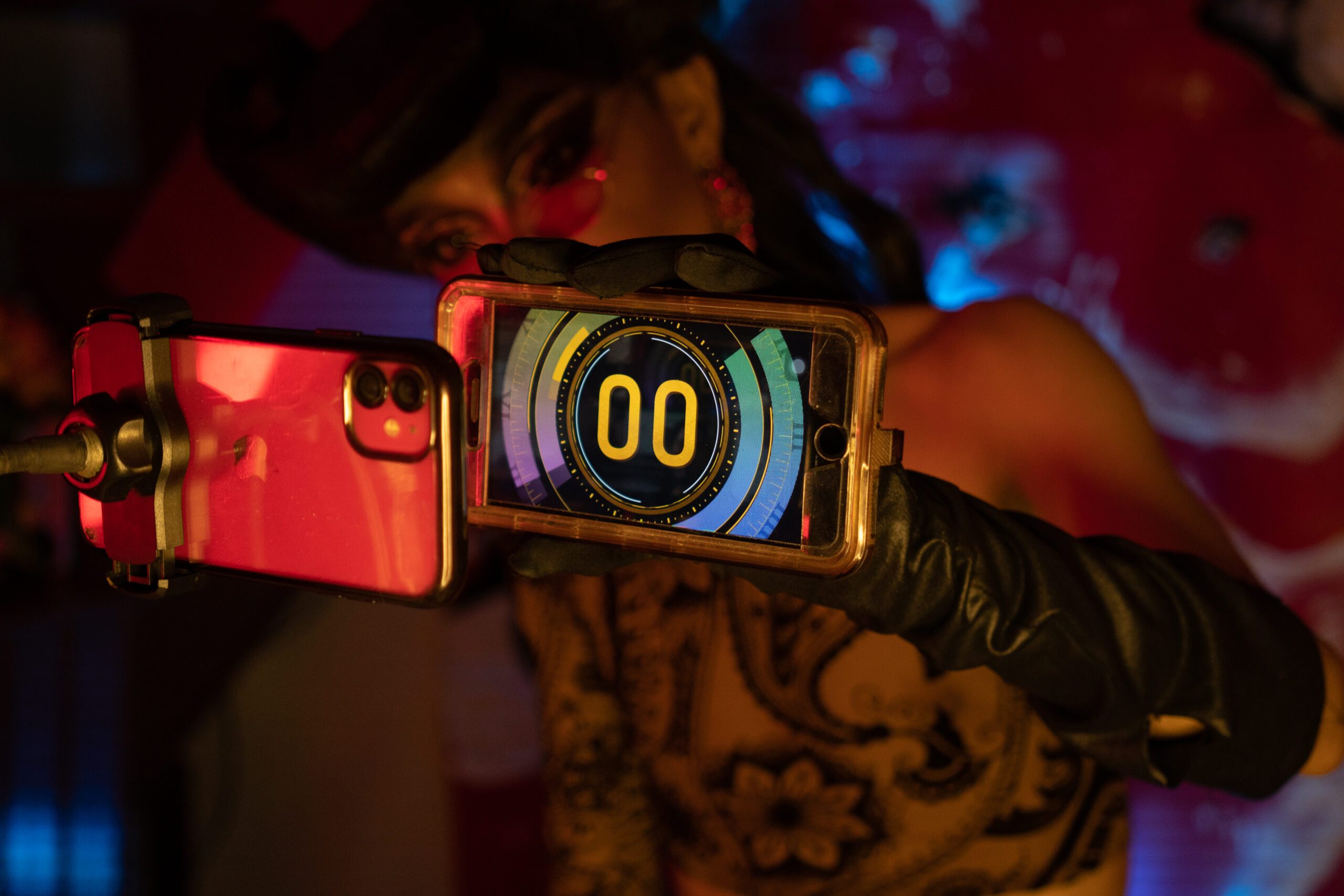
Together again
For Minty Fresh, doing drag online was “more comfortable but there’s this feeling of emptiness.”
“‘Pag super energetic ng crowd mas nabibigay mo yung best mo when performing. I learned to not take shows and drag for granted,” she said.
The proximity of warm bodies is an essential part of a drag performance, and many artists have attempted to approximate the live experience through virtual parties in teleconferencing apps and the ilk – but never coming quite as close.
In the drag world, a performance has always been collaborative in several ways. It hinges on bouncing off the energy of people around you. When reduced to little windows onscreen, a lot of that is zapped out.
“One of the aspects of communal live performance that had been unreproducible as the COVID-19 pandemic stretched on: how the energy of a room can osmose from person to person,” wrote pop critic Jon Caramanica in the New York Times, speaking about the live music industry. It might as well apply to the experience of many nightlife establishments that drag queens all around the world call home.
“From a distance, concerts are unidirectional, from the stage outward. But in the room they are complex, dynamic organisms – the observers are performers, too. You come to see what happens onstage, but you’re often just as shaped by what’s happening around you in the crowd.”

With the world coming to a stop during the worst peaks of this pandemic, the isolation had been also taxing for these queens.
“Every after online show nandoon yung feeling of loneliness kasi tahimik and alam mong nakakulong lang kayo at home,” said Minty. “Nandoon din yung feeling na longing ka mag-perform sa live na crowd.”
(Every after online show, there’s this feeling of loneliness. It’s silent, and you also know you’re stuck at home. There’s also this longing to perform live.)
Drag has also been particularly important to queer people and their history. The clubs they have called home are often considered sanctuaries for LGBTQ+ individuals to be themselves.
Eva observed that “there has been a huge shift in the gay clubbing scene,” where establishments that have reopened are struggling to recover, with charging higher at the doors as an understandable recourse.
The hardy Makati nightlife hub Poblacion has remained a destination, where some folks go for Drag Race viewing parties. Crowds have also flocked to places such as The Pop-Up Katipunan to mix and mingle.
With the demise of queer institutions that succumbed as part of COVID-19’s economic toll, “LGBTQ+ kids naturally needed to find other places to drink and convene,” added Eva.
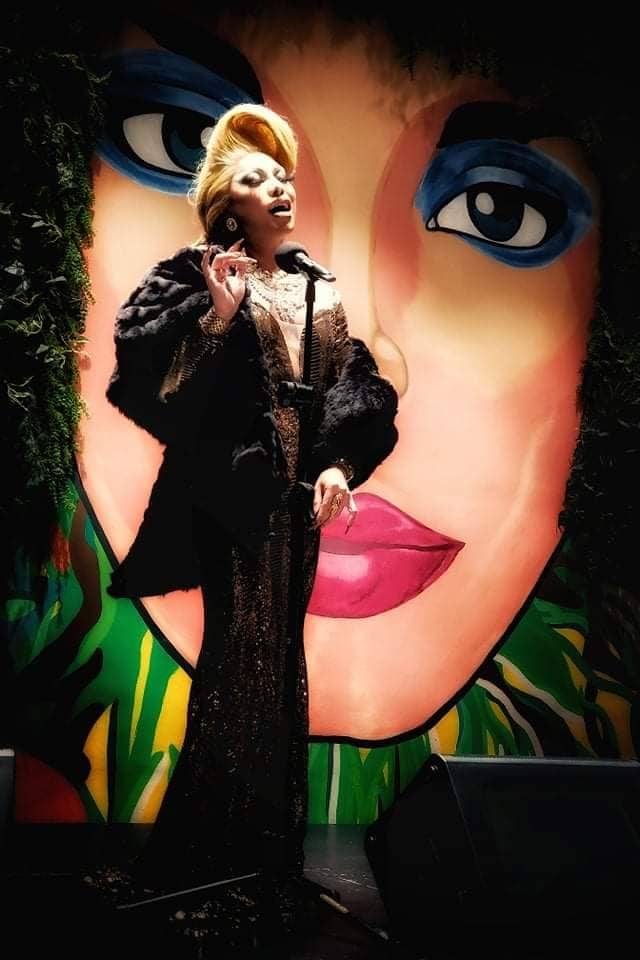
“Our need to connect and be surrounded with people within our community has not changed and if anything, was even made stronger by the isolation we all had been through during the lockdown.”
For Mrs. Tan, the pandemic highlighted how ephemeral these brick-and-mortar safe spaces can be. But she remained optimistic, saying how they will always spring up, no matter the circumstances – not necessarily in the form of clubs, just places to gather with trusted friends.
“There’s always this fear na baka mawala ulit siya (that they’ll disappear again),” she added. “Your safe spaces will always be created…. There will always be people who share the same values, share the same feelings, share the same experiences as you do.”
“I get to appreciate that even more because naramdaman ko yung pagkawala ng (I felt the loss of) warmth na yun from being isolated, to being together again. [I feel] so happy…to see everyone go…to be more accepting, and to see everyone evolve. Nakakataba ng puso. (It’s heartwarming).”

The people’s campaign
As these queer Filipino artists went through a global pandemic, the recent elections proved to be a milestone for some of them.
The polls in May 2022 seemed like a two-way race between outgoing Vice President Leni Robredo and now president-elect and dictator’s son Ferdinand Marcos Jr. Perceived by some quarters as a “battle between remembering and forgetting, a choice between the future and the past,” it was yet another major historical episode that they encountered.
Some drag queens gravitated toward the former’s volunteer-driven campaign, conveying drag’s political roots. Amid dwindling COVID-19 cases, these drag artists entertained mammoth crowds, reaching the hundreds of thousands.
Minty Fresh found herself making headlines when Ariana Grande posted a video from Robredo’s PasigLaban rally, with the thousands-strong crowd singing the pop star’s hit “Break Free” in unison. Dressed up in pink like Ari herself, she was the drag queen leading the crowd of kakampinks.

“Drag has always been political naman,” said Minty Fresh. “For me, drag is like an armor, parang (just like becoming a) superhero lang. More than performing and entertaining people, we had a message we needed to convey.”
For Mrs. Tan, who has activist roots, it was important to use their platform as drag artists, saying: “As someone na naniniwala na mayroon akong boses na pwede kong gamitin para makatulong sa bansa, ginamit ko siya.”
(I believe that I have a voice that I can use to help my country, so I took advantage of that.)
“A lot of them were invited to perform to entertain the crowd in full drag, under the scorching heat, amidst the grueling traffic – pro bono,” shared Eva Le Queen.
“Yet I know most of them have never felt more alive for using the art for a higher purpose. Some of my drag kids have been really proud of what they’ve done – even prouder than they were doing a gig in a club.”

Glimpses of a post-COVID future
The time that just passed doing online gigs wasn’t just a blip. It is making ripples, shaping the course of how the local drag community will forge its own future.
For one, the geography must fundamentally change, these queens argue. Disruptions to current business models must occur. While a cornerstone of the craft, the clubs can no longer be the center of their existence.
“[Digital shows] gave the power back to the drag artists themselves to take control of the direction of their drag and not be under the pressure and demands of a club audience,” said Eva Le Queen.
“The pandemic brought [about] the renaissance of queer art in general…kasi mas nabigyan ng (were given more) liberation yung queer artists,” argued Mrs. Tan.
“[It] broke down the walls of your nightclubs and it also broke down exclusivity,” she added. “It opened more opportunities for artists to collaborate and also for [newer ones] to emerge na hirap before kasi hindi nila alam kung paano magsisimula (who found a breakthrough hard to achieve because they didn’t know where to start).”

These could all mean tapping into a pool of unrecognized LGBTQ+ talent as well as unused spaces, and such welcome changes are gradually coming into view.
As a staunch advocate of the local community, Eva herself is pushing for visibility of the art form outside of the clubs – bringing drag to the people, so to speak.
“This has always been the vision – for drag to be seen and appreciated by more people,” she said. “For the longest time, not only have the clubs been the only place to see drag, it also monopolized and exploited drag talent.”
“More people are finding ways to make it happen and break away from the hierarchal and sometimes alienating culture inside the clubs.”
Her mission comes in many forms: viewing parties, drag and dine events, gay beach parties outside of Metro Manila, and more.
Before the pandemic started to take its toll, DeeDee’s drag house was also hosting similar projects in the form of #DragBrunchManila, which she had helped initiate and is raring for a comeback soon.
There have also been fruitful conversations on diversity and SOGIE (Sexual Orientation, Gender Identity, and Expression), too, and these have been materializing little by little.
“Regardless of kung gaano katagal ka nang nag-dadrag, it’s a free stage for everyone now,” Mrs. Tan said.
Drag kings are also coming to the fore, getting the top billing, for example, on Nectar’s Poison Wednesdays, as she pointed out. “Before, hindi nila alam na ang difference ng trans sa drag, parang ngayon mas nagegets na ng mga tao…. Tapos may mga nag-emerge rin na drag kings,” she said.
(Before, audiences did not know the difference between being trans or doing drag, and now, people are starting to get it. Drag kings are also emerging.)

This 2022, the local community could see a big boost thanks to the arrival of the Philippine edition of Drag Race and Drag Den, another reality show hosted by its alumna Manila Luzon.
“Filipino drag is getting the attention it deserves, and the world will see how amazing our local queens are,” DeeDee Holliday proclaimed.
More than the visibility, these reality series could potentially bring more opportunities, Mrs. Tan noted, demonstrating how there can be a “pool of endless possibilities.”
“Parang makikita siya ng mga commercial na, ay pwede ko pala siyang kunin ito as endorser. Pwede ko pala siya kunin sa event ko,” she said.
(Advertisers might see them and cast them as endorsers [or talents] for commercials. They can even be booked for more events.)
These queens, however, caution against questionable labor practices and plead for more fair compensation.
Paraphrasing Drag Race season 9 winner Sasha Velour, Mrs. Tan said, “We all want very equitable places where these drag artists can perform, express themselves, and [be] paid well.”
“For these queer artists to be fully empowered, they also need the means to do it, and personally, I’m thankful for the people who are continuously supporting in every way that they can.” – Rappler.com
Stock up on your favorite beauty essentials using this Lazada promo code.
Add a comment
How does this make you feel?
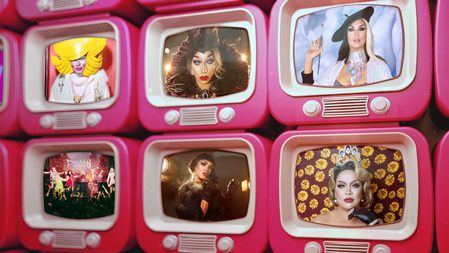
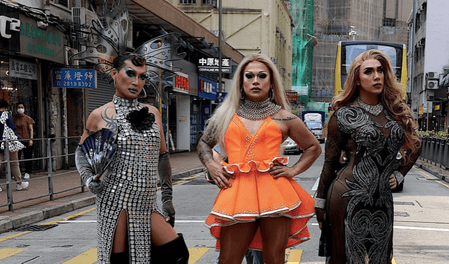
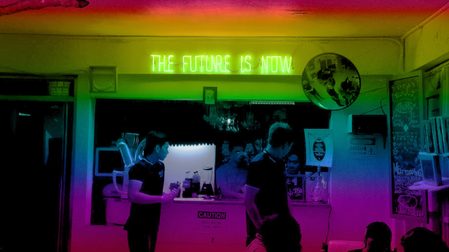
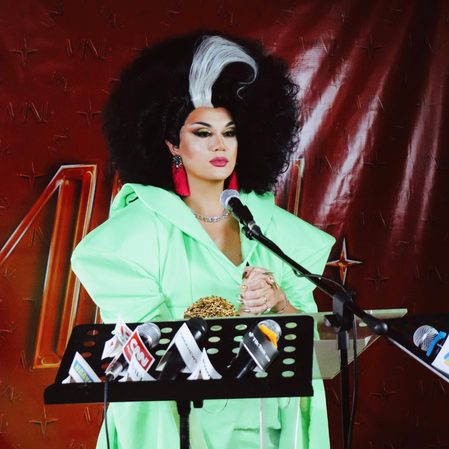


![[Time Trowel] Evolution and the sneakiness of COVID](https://www.rappler.com/tachyon/2024/02/tl-evolution-covid.jpg?resize=257%2C257&crop=455px%2C0px%2C1080px%2C1080px)


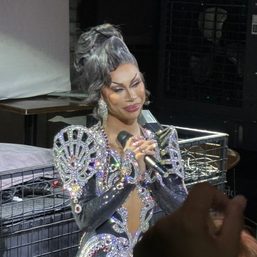
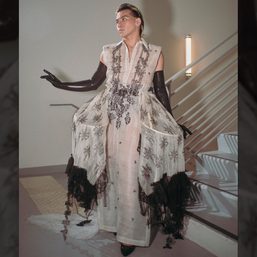
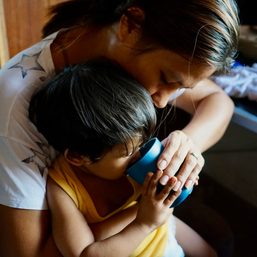
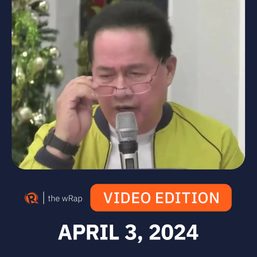

There are no comments yet. Add your comment to start the conversation.